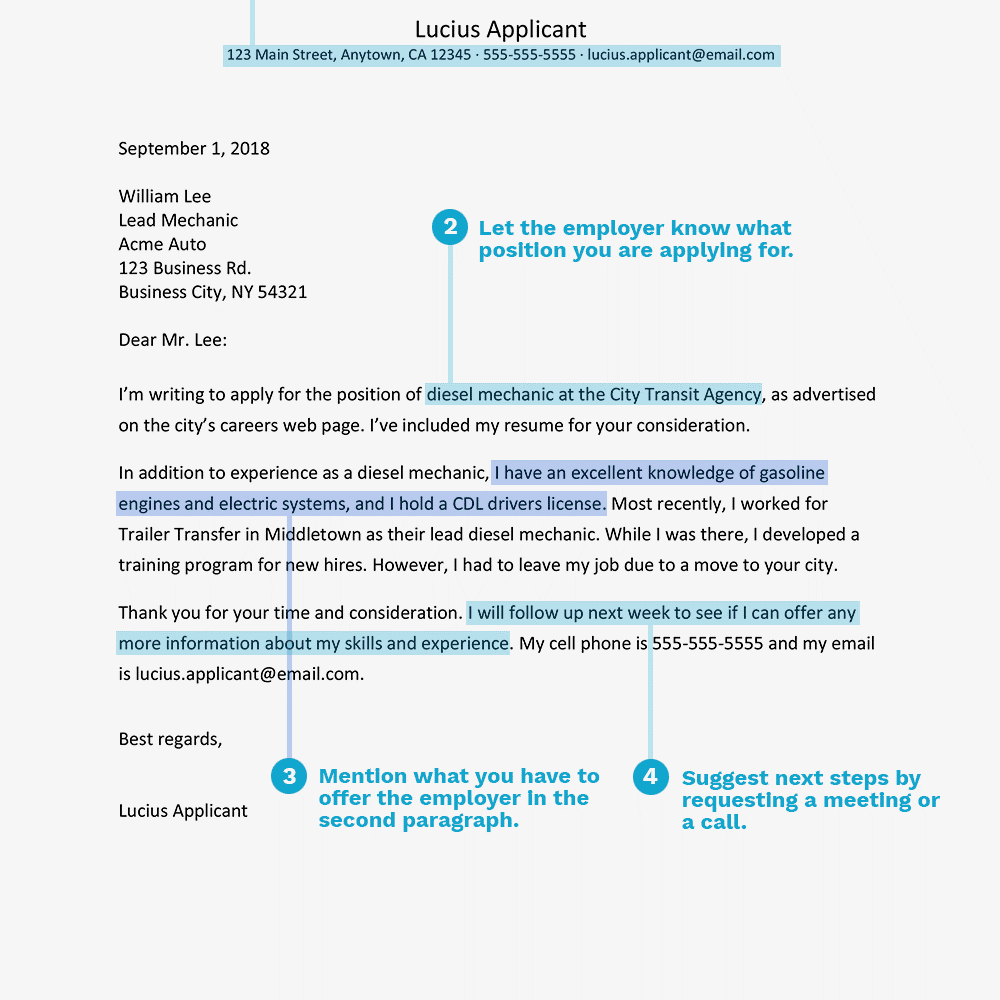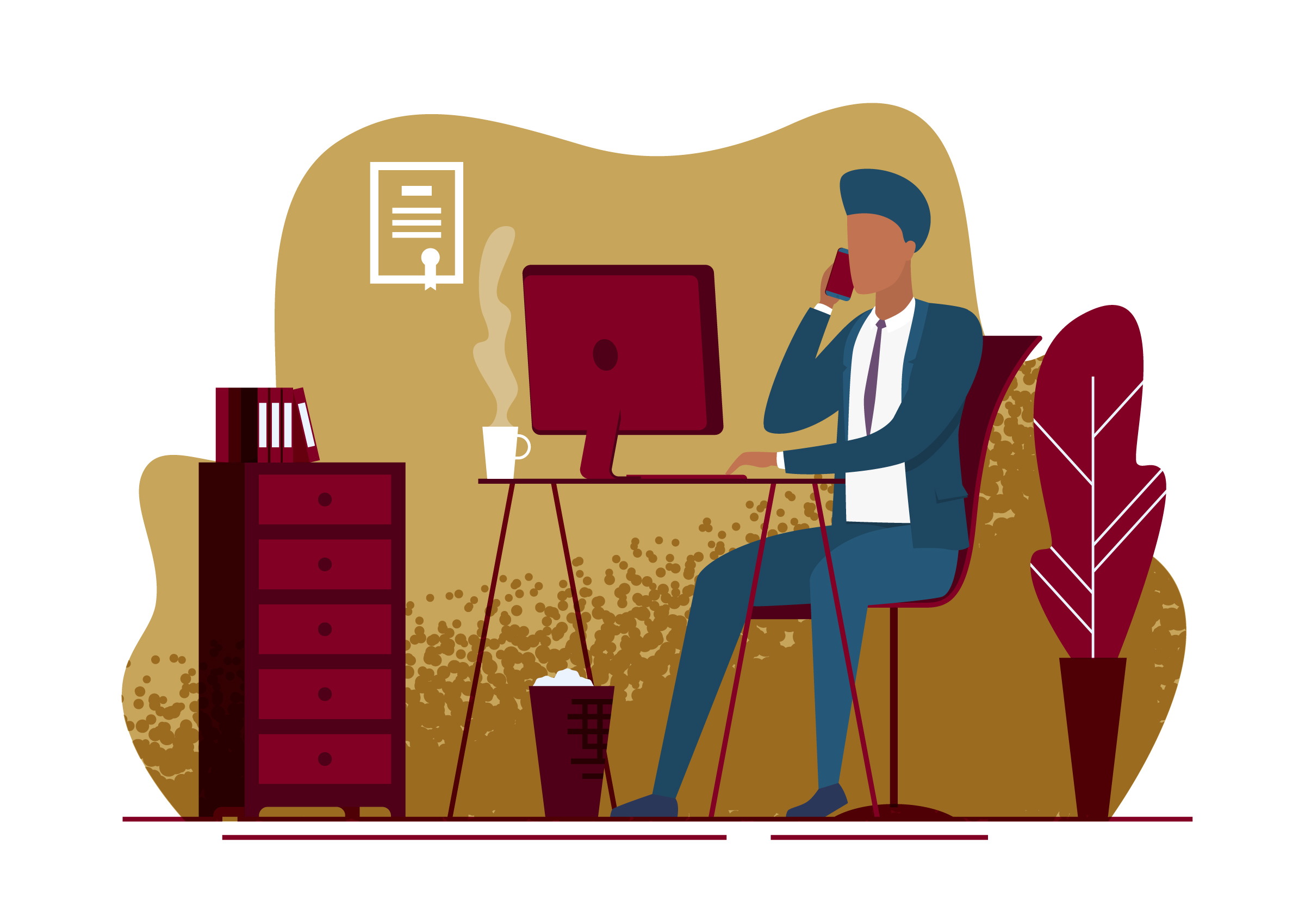Think of your cover letter as not just a form letter, but a written representation of yourself! Your cover letter needs to be attention grabbing and should contain different information than your resume. Some positions may not require a cover letter as part of their application materials. When in doubt, choose to write the cover letter. A thoughtful and well-written cover letter can increase your chance of standing out in a positive way.
Your cover letter should say why you are the right person for the job. What unique skills and experience you have that will help the company you are applying for. Your resume should then prove your case.
Your cover letter should say why you are the right person for the job. What unique skills and experience you have that will help the company you are applying for. Your resume should then prove your case.
Sample cover letter

Download a cover letter template here

Parts of a cover letter
Formatting:- Block formatting with left aligned text with single space paragraphs and double spaces between paragraphs should be used.
- Avoid abbreviations, spell out everything (industry exceptions may apply).
- Do not include personal information.
- Be consistent with margins, font sizes and use traditionally professional fonts.
Introductory paragraph:
- Use a personal greeting (avoid "To Whom It May Concern").
- Do your research. The first paragraph should contain the specific title of the position and how you learned about the opening, if you have a personal connection to the organization, a brief introduction as to why you would be a good candidate for the job, and why you are interested in working for the organization.
Body paragraph:
- Provide specific examples; this is your opportunity to provide a specific example from your experiences that highlights skill(s) within the job description. Think of this section as if the employer asked you an interview question: Give me an example of a time you . . . . "
Closing paragraph:
- Restate your interest in the position.
- Thank them for their time and consideration.
- Communicate next steps.
- Include your phone number (with area code) and email address.
- Use a professional closing salutation such as "Sincerely" or "Respectfully."
Cover letter do's and don'ts
Do:
- Show your personality by sharing why you are interested in the organization.
- Proofread your letter to ensure it is error free.
- Use block formatting
- Submit the file in PDF and include your name in the document title.
- Use a personal greeting by finding out the name of the hiring official
Don't
- Restate your resume or copy a cover letter sample verbatim.
- Write your cover letter 15 minutes before submitting it.
- Address your letter "To Whom It May Concern."
- Submit as Word document if given choice to save as PDF.
- Format your letter like an English paper.
When and when not to send a cover letter
Not sending a cover letter is much better than sending a poorly written one. A well-composed cover letter serves as a sample of your writing ability but, unfortunately, the opposite is also true. If you don’t have time to write a well-crafted cover letter that pitches your skills and positions for you the job, don’t do it.Likewise, if the job application instructs that you should not include a cover letter, then follow directions so as to not annoy your potential employer.
Also, if the company asks you to submit your application through an online platform, and there is no place for you to submit a cover letter, don’t worry about sending one.
Tips, questions, and help to get started
Seven tips to take your cover letter to the next level:
- Verify everyone’s contact information.
- Confirm that you’re using the right greeting.
- Make sure you’re sending the right type of letter.
- Pick your keywords wisely.
- Choose the right file format.
Questions to get you started:
- Why are you interested in this field and in this job specifically?
- What are the top three skills for this position?
- What is a specific experience where you used at least one of the above skills?
- Are there any possible "red flags" on your resume or application (job gaps, short term jobs, location changes)?

Different types of cover letters
Application Cover Letter:
An application cover letter is a resume and cover letter that responds to an open position that has been advertised or recommended to you. It should be formatted in a professional way and always include proper salutations and closings.
Detailed information should be included about you, the company, and position for which you are applying. You need to take the time to understand as much as possible about the position and write your cover letter based on the skills you have that they are looking for. The purpose here is to market yourself as their best option for an employee, so focus on your specific skills in relation to what the position is.
Prospecting Cover Letter:
A prospecting cover letter is a letter that inquires if there are any open positions that you may be qualified to fill. You may know that the company is hiring, but not know if there are any specific jobs that may suit you.
A prospecting letter, or letter of interest as some people call it, lets a prospective employer know that you are interested in the company. This cover letter also details your skills in the area of work that you are looking for. It may be a letter and resume that is placed in a file for future reference, so be sure to outline all the skills and types of positions you wish to be considered for.
Networking Cover Letter:
Networking cover letters can function as letters of introduction, referral letters, or network letters. These serve to recommend you to a company based on past experience you have had with other work. Networking letters can be written by other individuals recommending you for a position.
When networking letters are well written they can be a powerful tool in finding the work you want. They are powerful because they have recommendations from people you have already worked with. They may also help you to connect with people who can become a part of your base of career associates. Career associates are people to turn to when you need collaboration, to reach out to when you need advice, or to request help from when completing a project you find difficult.
